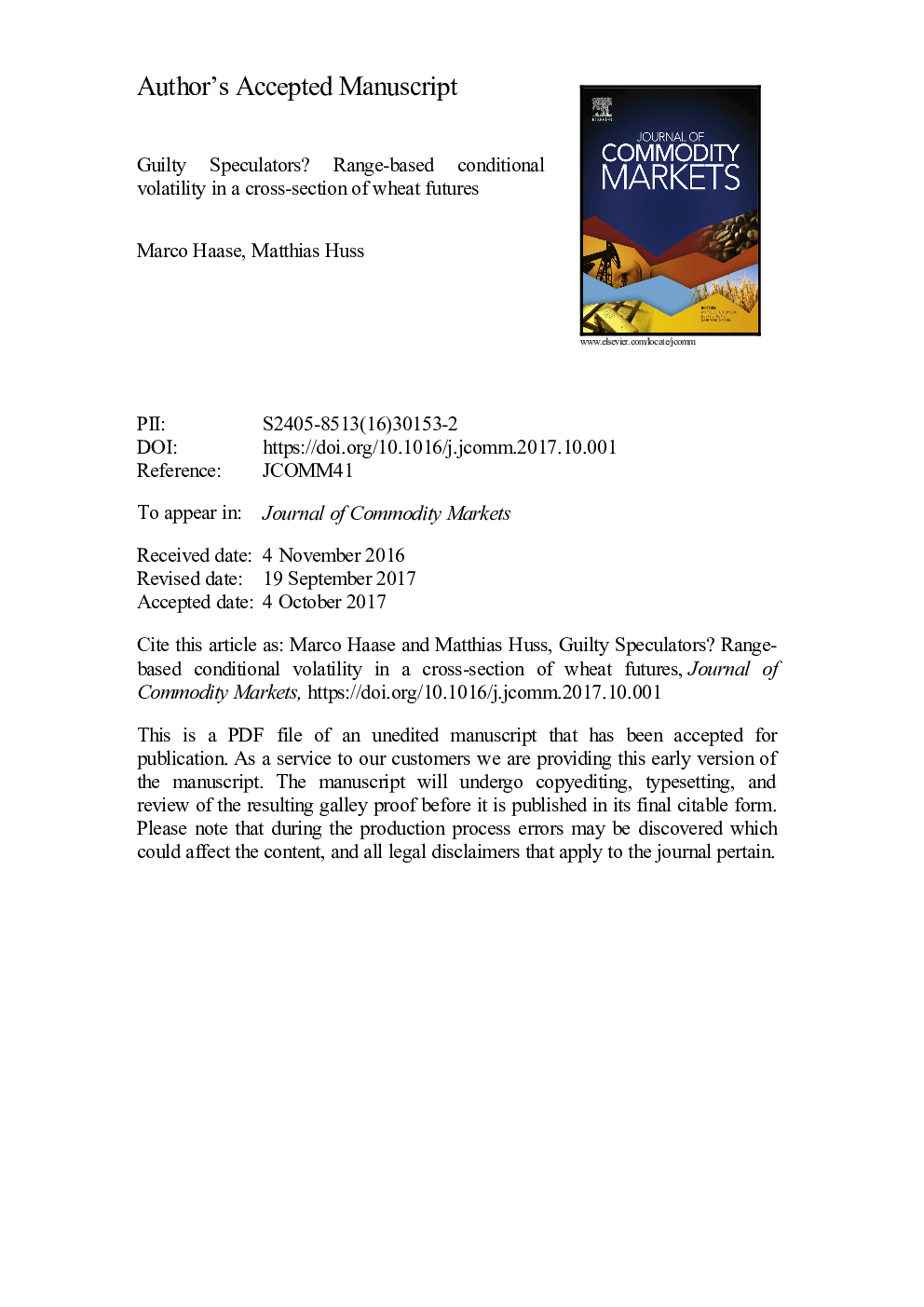| Article ID | Journal | Published Year | Pages | File Type |
|---|---|---|---|---|
| 7408856 | Journal of Commodity Markets | 2018 | 44 Pages |
Abstract
In response to the unusually high levels of price volatility during the world food price crisis of 2007/2008, US and EU regulators have introduced position limits that aim to protect commodity markets from exposure to excess speculation. Such regulatory initiatives presuppose that excess speculation is indeed responsible for excess volatility. Our results debunk this presupposition and show the opposite effect: speculative activity reduces price volatility, particularly during times of distress. Our findings are based on a cross-section of wheat futures contracts, traded at five different commodity exchanges with various degrees of speculative activity. Volatility is estimated based on a Conditional Autoregressive Range Model (CARR), which is further augmented with exogenous excess-speculation shocks (CARRX). These models capture herding, feedback and noise trading, and a threshold version (TCARRX) identifies regimes in which the anatomy of the volatility process changes according to the level of excess speculation. Our findings support Working's hypothesis that a certain level of excess speculation is essential for a well-functioning market.
Related Topics
Physical Sciences and Engineering
Energy
Renewable Energy, Sustainability and the Environment
Authors
Marco Haase, Matthias Huss,
